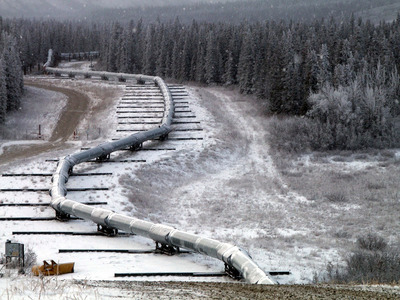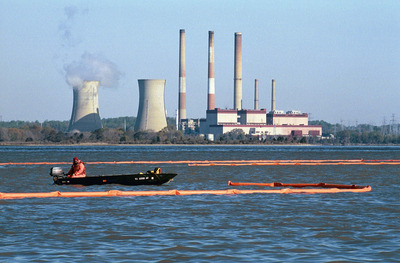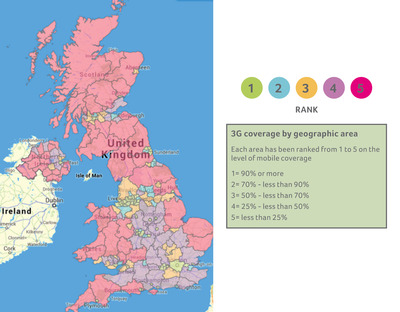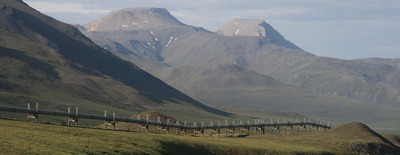Radio's role in M2M
By Stephen Jenkins and Andy Grimmett, Simoco Group
Wednesday, 05 February, 2014
What roles should cellular and PMR communications play as data bearers within the machine-to-machine networks?
Machine-to-machine (M2M) technology has firmly established itself at the operational heart of many industries and continues to offer an array of capabilities - including remote monitoring, tracking and configuration - that ultimately will drive efficiencies and better cost management.
Entry costs have lowered and a full-scale charge into M2M technologies is well underway. M2M is now fully integrated into areas such as remote monitoring, location tracking, remote control/automation (SCADA) and asset tracking. It is forecast that the number of M2M device connections will grow to 2.1 billion by 2021. These increases will be fuelled by all sectors, but utilities, manufacturing, primary industries such as mining and those using in-vehicle telematics will take a lead.
Although cost saving is of vital importance, another interesting driver for the adoption of M2M networks is that they can enable new ways of working, and indeed completely new business models. M2M is therefore becoming an integral part of how many businesses operate, by providing new and enhanced processes that can improve the levels of service delivered to customers.
Drivers for M2M
A key driver for the adoption of M2M solutions is that M2M enables the automatic monitoring of remote assets, regardless of their location and environmental conditions. By automating remote monitoring, utilities can greatly reduce their maintenance and administration costs, by significantly cutting down on the number of site visits by maintenance engineers.
Scheduling regular site visits to perform routine checks on equipment is time-consuming and expensive, especially if the equipment in question is in a remote location. In addition, a site visit only checks the equipment status at a particular point in time. With M2M solutions, equipment can be automatically monitored continuously, and so gradual changes in the status and performance of assets can be checked, so that proactive maintenance of equipment can be scheduled at a time when minimum disruption and inconvenience to customers and the general public can be guaranteed.
Of course, connecting devices alone is not enough; M2M systems also require the ability to use the data collected, through software applications that monitor and trigger activity; for example, by integrating the data into an existing enterprise resource planning (ERP) system to track and manage business resources. If you are not measuring a process, you cannot manage it. But simply collecting data is not enough - communication with remote assets costs money in terms of airtime. Customers seldom like paying for airtime alone, but they will pay for guaranteed service levels in terms of reduced outages and tailored transaction services.
One example of M2M solutions turning maintenance and fault resolution from a reactive task to a proactive process can be found in the natural resource sector. Pipelines transporting crude oil and other environmentally hazardous materials, such as natural gas or petrol, may cover vast distances, across remote landscapes. Crude oil is corrosive, and that, coupled with the natural environmental degradation of the pipeline material over time, means that leaks can occur. Without remote monitoring, a leak may not be noticed straight away, especially if the pipeline is buried, resulting in loss of revenue, inability to service customers’ requirements and a potential environmental catastrophe.

If M2M equipped sensors are placed at strategic intervals along the pipeline, it becomes possible to continuously monitor the thickness of the pipeline wall over time, and to establish the rate of change of the pipeline’s mechanical integrity. The probability of a leak in a particular section of pipeline can be automatically determined within the M2M environment, allowing that section to be shut down before any leak occurs. Preventative repairs can be scheduled before any loss of resources or environmental damage takes place.
Regulations often punish serious environmental pollution with heavy fines, in addition to loss of resources and clean-up costs, so turning maintenance from a reactive to a proactive process makes a compelling business case for an M2M solution.
In the case of utilities, keeping customers on supply is a key performance indicator. Customers expect gas, electricity and water to be available on demand at all times of the day. In the UK, the most recent energy capacity assessments from energy regulator Ofgem suggest that margins in electricity and gas are potentially falling to low levels. Ofgem’s current assessment is that the risks to electricity security of supply will increase during the next five winters.
Part of this is being driven by the ongoing reduction in electricity supplies from older coal-fired generation plants. In the UK, many of these older power stations are being forced to close as a result of carbon reduction targets mandated by The Climate Change Act 2008. Worldwide, 186 nations have ratified the 1992 Framework Convention on Climate Change (UNFCCC), responding to the long-term challenge of climate change and the contribution of greenhouse gas emissions from human sources.

Coupled with increased demand for electricity from a growing population and the requirements from industry for sustainable low-cost power as a key enabler of growth, the strain on utility networks is set to increase, meaning that new solutions to ensure security of supply will be required. M2M systems can continuously monitor key assets on the distribution grid and utilities can set automatic alarms to anticipate or predict fault conditions, switch supply from other sources or schedule preventive maintenance before the supply situation becomes critical.
An increase in the use of renewables, such as wind farms and solar energy, which are less controllable and more unpredictable than traditional plant, will force us to reconsider how we satisfy our energy needs, and how power is provided and delivered. The increased use of renewables and a more distributed generation plant will require smart grid technology controlled and monitored by M2M systems, to ensure that power can be continuously and reliably delivered to customers.
Increasing regulation
The move towards smart grid adoption and advanced metering infrastructure is also being driven by government regulation. In Sweden, for example, the government is mandating that utilities must be able to accurately read all of their customers’ meters once per month. This is driving the wholesale rollout of smart metering that depends on M2M solutions, often using wireless connectivity such as cellular and radio, to enable the two-way communications required. Other European countries are expected to follow suit, which will significantly accelerate the rollout of smart grids throughout Europe and beyond.
Smart grids that enable generation of real-time billing applications - increasingly demanded by customers and regulators alike - will assist in driving down energy consumption and reduce energy waste.
Green technology
M2M technology can be used for remote monitoring of the environmental conditions within buildings and campuses. Using M2M solutions it is possible for information to be automatically collected from a range of sensors, such as those that monitor light, temperature and humidity levels throughout a building. This data can be processed automatically, enabling local lighting, heating and ventilation controls to be adjusted, with individual devices capable of being automatically controlled remotely to reduce energy consumption, cut costs and maximise the environmental comfort for people in particular locations.
For large buildings such as airports, shopping centres and university campuses, costs associated with lighting and heating are a major overhead, which have traditionally been difficult to control. M2M technology can automate this task, providing real savings that add directly to the building operator’s bottom line.
Equipment protection and worker safety
With the remote monitoring and control of equipment it becomes possible to adjust the operational parameters of certain machines as soon as a potential problem is recognised. For example, a conveyor belt feeding rocks to a crusher in a quarry can be slowed down if the bearings on a drive motor are approaching the maximum recommended operating temperature, in order to prevent failure. A repair crew can then be dispatched to carry out maintenance and repair tasks, at a time most convenient to the operator.
Service levels and outages
Companies can utilise M2M technology to ensure better, more appropriate or tailored service to customers by using remote monitoring to anticipate and respond to problems before they become a real issue for the customer. For example, monitoring sales activity and stock levels at a retail outlet, in real time, allows a retailer to anticipate potential stock shortage, thus improving customer satisfaction and preventing loss of sales.
In many utility industries, the regulators impose penalties on network operators in the event of certain service outage conditions. In the UK, Ofgem sets the guaranteed standards that apply to individual customers and invoke penalty payments if the supplier does not meet these guidelines. The penalties involved depend on the nature and time of the supply outage and weather conditions, so it is vital for utilities to have reliable M2M technology in place, monitoring reports of faults on the network, so that repairs can be instigated in the shortest possible time. This minimises outages and reduces the level of penalties that the utility company may have to pay.

Cellular
The majority of M2M communications are conducted using cellular GSM, as public networks using this standard are available in over 90% of the world. Telemetry devices for use on these networks are readily available and it is therefore relatively easy to deploy M2M communications using mobile phone networks as the data bearer.
To further the case for cellular as an M2M solution, mobile phone technology has been increasing its data capabilities at a dramatic rate. When 2G (second-generation mobile) networks were first gaining popularity with the general public, it was primarily used for voice communications and, due to the cost, usually for only occasional or emergency use. However, it wasn’t long before text messages started to play a role in people’s day-to-day lives and it became the accepted norm as a means of communication. A staggering 20 billion text messages are now sent every day worldwide.
3G networks opened up a world of wireless data beyond the simple text message and delivered data speeds in excess of 200 Kbps, making it viable to ‘surf the internet’, stream video and provide a rich array of data-centric applications to smartphones. The 4G LTE networks now being rolled out will see data rates increase further to figures in the tens of megabits per second.
These developments in cellular technology have not only increased data rates but have attracted a large customer base, which rose to 6.8 billion in 2013.
However, while these data advances are headline grabbing and increasingly used by the general public, we need to ask if the same level of relevance applies to M2M and, in particular, within the utilities sector. In order to answer the question, we need to examine some of the key requirements that exist for most utilities.
Coverage, reliability and resilience
The ability to provide high-speed wireless communications is useful only if the service can be provided reliably at the locations where it is needed. It is not widely understood how sparse mobile phone networks actually are, as the operators have built networks to provide coverage in densely populated areas. However, taking the UK as an example of a country heavily invested in public networks, Figure 1 shows there is surprisingly little geographical network coverage. Other countries around the world show similar or far less geographic coverage.

It is essential that companies such as utilities have reliable wireless communications to 100% of their operational areas. The operational region of a utility company often includes large rural areas where there are few people but the potential for a significant number of assets that need to be monitored and maintained.
M2M communications are vital in delivering data from remote assets to enable smart decision-making at times of need. It is therefore essential that the communications network chosen to deliver the data is always available.
A power distribution company is at its busiest when storm conditions have caused damage to overhead power lines, interrupting the supply and leaving customers without power. The company needs to get data from the distribution network in order to make the right decisions to get customers back on the grid as quickly as possible.
Unfortunately, it is frequently the case that the power interruption leaves sections of the mobile phone network without power, in turn affecting the utility company’s ability to make smart decisions through lack of remote data from the field. In addition, it is essential that wireless communications are always available in order to perform safety critical switching operations from the control centre to equipment in remote locations.
Contention, security and costs
Related to the requirement above for reliability and resilience is the need for M2M data to always get through. The public access nature of mobile phone networks means that all users share the same level of priority, which at busy times will cause call contention. A good example of this can be demonstrated when the clock strikes midnight on New Year’s Eve and the cellular networks are congested with calls resulting in ‘network busy’ responses. More often, this kind of contention can be caused by everyday occurrences such as road traffic accidents or severe weather conditions.
This lack of control can be crippling to a system that relies on assimilating data from hundreds of remote locations in order to make decisions.
The use of public networks also presents certain security risks. Measures need to be taken to prevent hackers from gaining access to the system to read data from M2M devices or control remote assets.
By enabling communications capability across more end points, as well as cellular data being sent over a public network, there are good reasons to consider the security implications of M2M. The recent news that Berlin-based Security Research Labs has been able to hack into SIM cards will only increase the focus on security threats within this area.
The initial low investment cost in cellular-based M2M solutions can seem attractive, but the long-term costs are very difficult to establish, with rapidly changing technologies and call charges presenting uncontrollable factors into the budgeting equation.

The case for radio
Private mobile radio (PMR) has been in use since the 1950s, well before mobile phones were thought of … despite the basic functionality being identical. As with cellular, radio has gone through several evolutions and now delivers a rich array of voice and data services through a range of digital protocols.
Radio systems are designed to be frequency efficient and therefore operate within a narrow band of radio spectrum. While the date rates of radio will never compare to those offered by cellular networks, they do satisfy all of the requirements of an M2M solution and address the shortcomings of their GSM counterparts.
Since radio systems are usually owned and operated by the enterprise, they are specifically designed to fit the operational requirements of the business. This starts with coverage planning to ensure that base sites are installed in strategic locations to achieve 100% coverage across the operational environment. This effectively delivers wireless voice and data services where required, with no black spots. During this planning process, the company will identify all of the locations where M2M devices will be required now and in the future to ensure that good coverage is supplied.
Latest-generation radio systems feature a distributed architecture that enables the system to continue to operate in the event of equipment failure. It is common for designs to specify no single point of failure, and IP/Ethernet backbones are used between sites to ensure a resilient mesh backhaul that will continue to deliver M2M data in the event of any issues within the network.
By its very definition, PMR networks are ‘private’ and therefore less vulnerable to security threats than public networks. Added to this, the latest digital radio standards include high levels of protocol encryption for the levels of security demanded by our public safety services and government agencies.
Finally, radio systems provide a predictable cost of ownership. Systems can be designed to exact requirements and - once installed at the budgeted cost - there are no further call charges or unexpected upgrades as new technologies are rolled out. Radio systems have typical life spans of between 10 and 15 years, and equipment suppliers typically provide support and maintenance to customers over the entire lifetime of the system, although some customers opt to engage their own staff in the operational support of the network.
Organisations that have existing radio infrastructures can also leapfrog many of the basic pain points involving investment in network build by utilising the asset that is already in place. With these costs already accounted for, all of the benefits of M2M are within reach at a much lower level of investment. This makes business case justification, implementation and time to go-live faster and more straightforward.

A lower-cost option?
Businesses with no existing mobile radio system in place, or the need to expand the coverage of an existing system, should consider their requirements and whether radio can fit the brief. This is especially relevant in ‘off-grid’ locations where coverage is required.
With radio, you decide where the coverage is needed and design the network according to your requirements in terms of capacity, coverage and capability. Radio can get to places where public networks cannot go or, more realistically, do not go because there is no commercial rationale for the investment. Examples of this might be remote locations like mines or oil and gas platforms. Radio also comes into its own in the built environment, being able to cope with tunnels or the basement of an office or apartment block. Of course coverage isn’t just limited to geography; cellular signals can also be affected by congestion, weather and outages, all of which may negatively impact on the returns and levels of reliability of a cellular based M2M system, further adding to the argument for radio.
In addition to the savings available from sweating an existing asset or installing a new radio system, the operational costs of running M2M over PMR are lower. There are no data transmission costs involved across private radio systems, and existing capacity can be utilised to carry the M2M data.
A typical M2M solution
M2M solutions can be complex; according to Analysys Mason, the average M2M solution will involve between four and six suppliers, impacting on time, levels of risk and project management requirements. Those organisations with existing radio partnerships benefit from working with a supplier that not only understands the core architecture of the radio system, but who already has a solid understanding of the customer’s business processes, operations and strategic requirements. A single point of contact has many benefits from purchasing, customer support and project management perspectives. M2M solutions consist of several key components that must work together reliably and provide the required data communications. The key elements within an M2M network are:
- Connected device - the remote asset with which M2M communications is required.
- RTU (remote terminal unit).
- Firmware/communications protocol - it is important to ensure that M2M communications are reliable while at the same time minimising airtime usage and power consumption in remote assets where battery power is often required.
- Data communications.
- Server - required to process data and execute commands based on the data received and decision management software.
Real-world scenarios
When considering radio within an M2M perspective, there are three basic options: using an existing radio network to implement an M2M solution; using radio to enhance or extend a converged M2M solution that has multiple comms bearers; or the installation of a radio network to enable M2M capability where cellular isn’t viable. As we have already explored, the scope of M2M is vast so let’s look at these different executions within a single context - the utilities sector.
Many utilities have radio systems across their networks already, as mobile network coverage cannot be guaranteed in remote areas. As discussed, during emergencies, the 2G/3G network often become overloaded by other users, yet utilities need to maintain communications across their operations. This isn’t just a nice to have; monitoring outages and restoring electrical power is vital after disasters. Utility companies need radio to support critical communications when there is no access to the emergency services’ network and the public cellular networks are in meltdown.
This is recognised at the highest levels, with some governments considering mandates to enforce utilities to invest in radio, so they can maintain communications during emergency situations.
The utilities sector, in common with the oil and gas industries, is moving away from periodic inspection to continuous remote monitoring. M2M enables this move as remote telemetry units can work 24/7 relaying data back to a central control room. So, rather than having major downtime for repairs, utilities will have minor planned outages for maintenance. In fact, government regulations on operational efficiency and environmental safety may force companies to install reliable M2M systems, to monitor remote systems and anticipate power outages.
Using an existing PMR network
If a utility company already has an existing radio infrastructure, then there is no requirement to invest further in developing additional networks to facilitate M2M. The simple addition of an M2M Gateway can turn an existing radio infrastructure into an M2M bearer network (Figure 2). The data rates are relatively low and in most industrial settings M2M does not require broadband systems, such as 4G/LTE. Using a radio network for M2M benefits the utility by exploiting an existing communications asset.

The utility company can quickly, and with minimum investment and operational impact, generate savings through the integration of monitoring systems, asset tracking and security.
The traffic on remote monitoring sensors is typically low bandwidth and so radio is an ideal and low-cost way of handling the transmission of data messages. Many bespoke M2M solutions have been developed for utility companies over the years; however, most customers wish to move to commercially available equipment for reasons of cost and long-term support, so capitalising on an existing asset such as a radio system and using a set of standard technologies makes good economic sense.
As we have discussed, cellular networks have limitations in terms of coverage - radio can fill in these gaps to enhance and extend existing M2M networks. M2M applications can therefore adopt a mixture of cellular and radio communications. Most sensors and RTUs are network agnostic, lending themselves perfectly to this blended approach.

Figure 3 indicates how radio may be used to fill in coverage gaps in the operational area for a utility. The radio network used for voice may also be used to carry data traffic and is therefore ideal for M2M communications in areas where cellular network coverage does not exist.
In summary, M2M networks are already vital to businesses in maximising the utilisation of assets and delivering improved customer service and solutions. The prolific availability of cellular will mean that this is the natural choice for many M2M solutions but M2M will also be delivered over multiple bearers including radio. In some industries such as utilities and natural resources, there will be a compelling argument for deploying M2M networks over radio.
Wireless networks for mine management
Today's fleet management applications form the foundation for a future where driverless...
Wireless networks for mine management
Today's fleet management applications form the foundation for a future where driverless...
Interoperability for Tasmania's emergency services
Tasmanian police, fire and ambulance services can now communicate directly with each other,...



